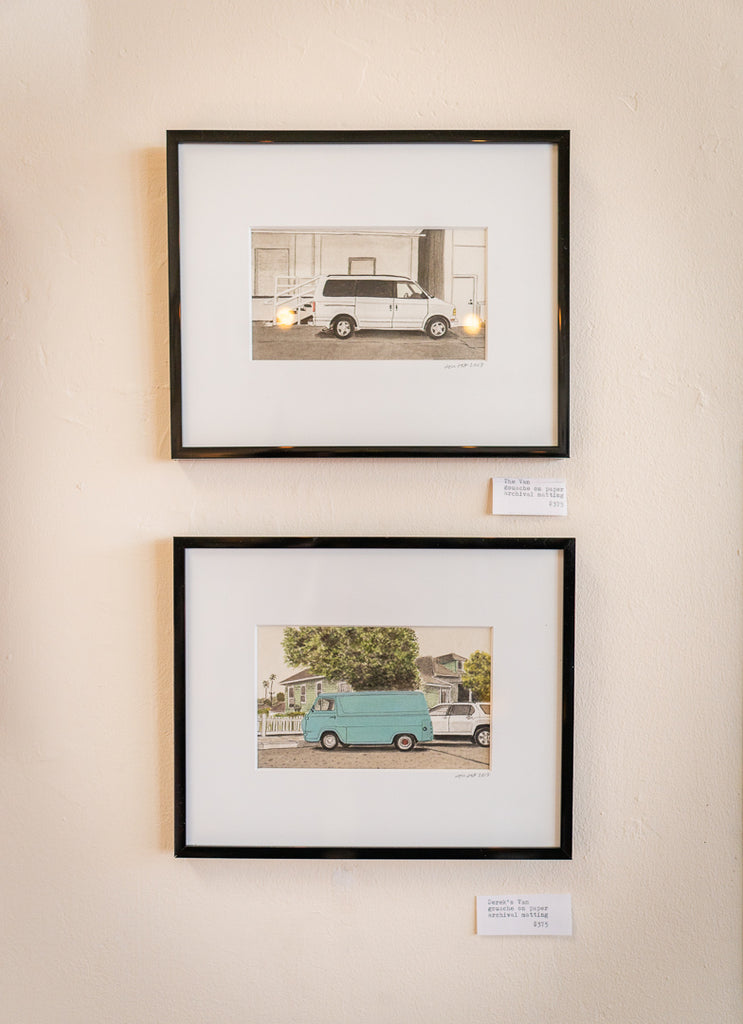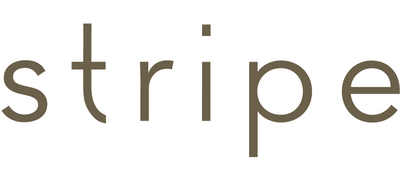
Elevating the Mundane with Artist Louise Leong
By Kay Montesanto
Some of us can instantly relate to the idea of finding worth in objects which have been either cast aside intentionally, or lost in the translation of daily existence. Others of us glide through our livelihoods, and gloss over materials which are essential to the world which seeks to sustain us. Louise Leong represents a case of noteworthy vision, in that she has the ability to facilitate her frame of reference through her artwork, in order to bring light to the weeds that peak through pavement, the oils that stain Santa Cruz asphalt, and the cars which burnish our local streets.
The rarity of her sight and her pointed articulation of such through her current collection, Cars, has generated interest in our team beyond that of our decision to adorn the walls of Stripe MEN with her work. For that reason, I reached out to Louise with curiosities that burned in my belly; how could such simplicity be conveyed in this way which forces nostalgia through the tips of my fingers? I reached out to Louise, who is producing work for shows all over Santa Cruz, and blessed be the day she responded and dropped knowledge and inventive thinking right into my inbox. If you need a perspective alteration which will ultimately result in keening your daily environmental and residential awareness, keep on reading.
Kay: One (wo)man’s trash is another (wo)man’s treasure. Do you find this idea relevant to your work in the sense that you tend to find and focalize lost objects that may be unseen or overlooked by others?
Louise: Yes, absolutely. I love to bring attention to things that are often overlooked, dismissed, or straight-up mundane. My feeling is that these little things really add up in the full experience of living life.
Most recently, I was appreciating the tenacious weeds that grow in the asphalt cracks along the side of the warehouse that I work at. My attention to the weeds is likely heightened from working on my latest series of paintings of street scenes that include sidewalk cracks and oil stains in the street. Those details really add to the overall impression of the paintings, as small as they are.
Kay: In terms of your work, what does your definition of beauty look like? Does beauty have anything to do with your process of creation?
Louise: I don’t consciously think about what’s beautiful as part of my process but I am very aware of where I direct my attention. Maybe the attention you give something is indicative of its beauty, rather than the other way around.
At the moment, I am very attuned to the found beauty of street scenes which include parked cars, blossoming trees and their fallen petals, and clunky abandoned furniture on sidewalks. If I feel the urge to look at something again, I stop to take a photo of it. I paint from these reference photos and paint them as-is in the original composition that made me look twice.

Kay: How do you ideally hope for your pieces to be interpreted? Does interpretation by an audience at all shift the way in which you articulate your work?
Louise: I’d like my audiences to be able to personally relate to my work and find connections between how they experience something and how I express it.
This is especially true for my illustration and comics. I like to make people laugh and I like to hit the nail on the head. I enjoy hearing, “Yes, I’ve felt like that before!” I don’t think my experiences are exceptional, but I’m motivated to visualize them first and very concisely, like getting to say the punchline to a joke. It thrills me!
With my paintings, I am more interested in variety of audience interpretations and responses. Because my paintings are typically slice-of-life mundane scenes, hearing someone’s interpretation of those paintings is more telling about themselves than the work itself. Learning about people that way thrills me too.
I guess that the ways that I articulate my work is crowdsourced and synthesized from collective experiences of the audience and myself.
Kay: Is your art meant to be seen by anyone in particular?
Louise: No, not usually. I’d like anyone and everyone to see my work. However, I was hoping to get the drivers of the cars that I painted to see my show. I left flyers on car windshields with personal invitations. Who wouldn’t want to see a lovingly painted portrait of their cool car?
Kay: What differentiates your current work from those which you have created in the past? How does the distinction indicate your transformation and growth as an artist?
Louise: My earlier work is graphic, pop-art oriented, a little juvenile, and irreverent. It’s clear that I am inspired by classic cartoons, carnivals, and arcade games by my illustrations. My lines are bold and crisp with a palette mostly composed of highly saturated primary colors. The qualities of my work are determined by the medium in which I create it. The flatness and weight of line in this earlier work is informed by working in screenprinting.
Likewise, working in gouache paint has given my current body of work a subtlety that diverges from my early work. Layers of transparent and opaque washers of color give my paintings a richness that also displays a more skillful handling of color. There is an energy to my current body of paintings that feels more controlled and deliberate than the frenetic energy of my earlier pop art.
Though I’ve shifted my technique from graphic illustration to representational painting, my choice of subject maintains a connective thread of humor to my earlier work. My motivations remain the same to elevate the mundane and overlooked.

Louise's show CARS is up at Stripe MEN until Monday, July 29th. She is also part of Little Giant Collective.

Leave a comment